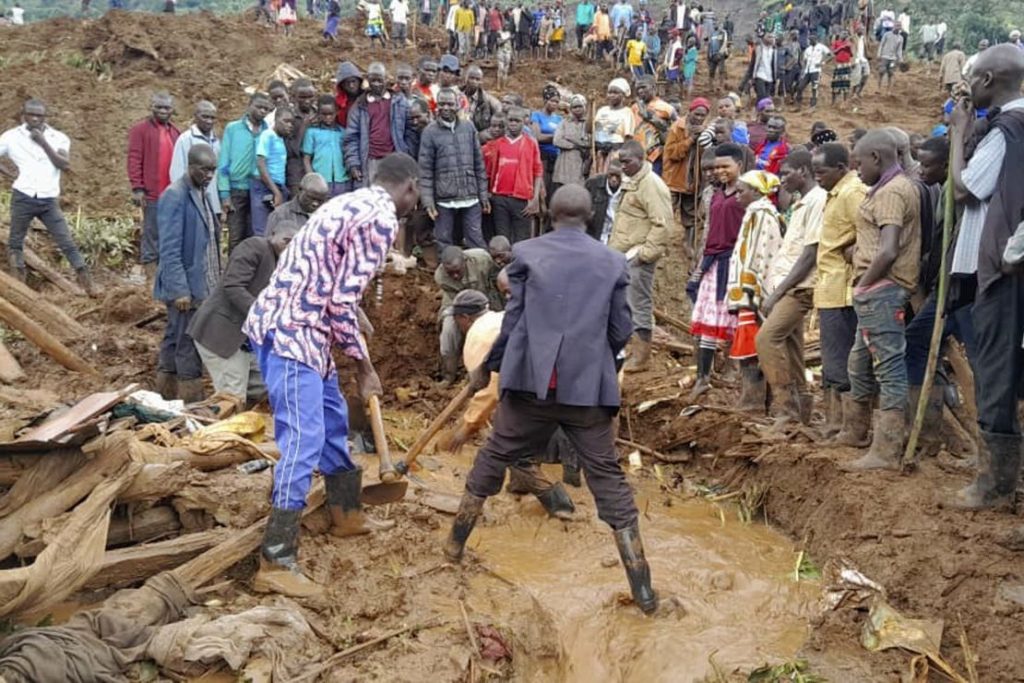Devastating landslides in eastern Uganda have claimed the lives of at least 15 people, with 113 others reported missing, according to police on Thursday. Triggered by days of torrential rainfall, the disaster struck late Wednesday, burying parts of five villages in the Bulambuli district under thick layers of earth and debris. The affected villages include Masugu, Namachele, Natola, Namagugu, and Tagalu, with Masugu reportedly the hardest hit.
The Ugandan Red Cross confirmed the destruction of around 40 homes, with some sustaining partial damage. Local residents and emergency responders have been frantically searching for survivors amidst the rubble, often using bare hands due to a lack of equipment and impassable roads that have hindered rescue vehicles. A video released by the Red Cross shows desperate villagers digging through the mud while anguished cries echo in the background.
So far, 15 bodies, including that of a baby, have been recovered. Another 15 people are receiving treatment in a local hospital, while more than 100 remain unaccounted for. The scale of the disaster continues to unfold, with district commissioner Faheera Mpalanyi warning that many more are feared buried beneath the debris.

Heavy rains have wreaked havoc across the country, prompting the government to issue a national disaster alert. Flooding has also been reported in the northwest after a tributary of the Nile River burst its banks. A major road connecting Uganda to South Sudan was submerged, forcing authorities to deploy emergency boats to rescue stranded motorists. Tragically, one of these rescue boats capsized, resulting in the death of an engineer, according to Uganda’s defence forces.
This is not the first time Uganda has faced such a calamity. In 2010, mudslides in the Mount Elgon region killed over 350 people, and earlier this year, more than 30 lives were lost in a landslide in Kampala. Despite the country’s history of such disasters, the scale and frequency of these events highlight the urgent need for improved disaster preparedness and climate resilience.
The government continues to work with local authorities and aid organisations to intensify rescue operations and provide relief to affected communities. However, the road to recovery will be long, as families mourn their loved ones and grapple with the destruction of their homes and livelihoods.


